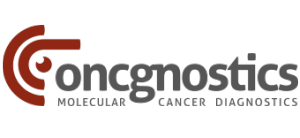World Cancer Day: Saving lives with groundbreaking cancer diagnostics
Close the care gap – that is the slogan of this year’s World Cancer Day on 4th of February. Cancer can be prevented and lives saved through screening. Preventive measures are still too seldom taken. oncgnostics GmbH has set itself the goal to improve cancer diagnostics in order to detect more cases at an early stage by developing molecular tests.
Example: cervical cancer
Cervical cancer can be prevented through screening. Nevertheless, about 300,000 women die of it every year.[1] Although there are ways to prevent cervical cancer or at least detect it early:
Firstly, girls and boys can be vaccinated against human papilloma viruses (HPV) – if possible before their first sexual contact. HPV are the main cause of cervical cancer. Secondly, women can have an HPV test and/or Pap smear performed by their gynaecologist. Whether there is organized screening available varies from country to country. But regular screening is important, as the problem with cervical cancer, but also with vaginal and endometrial cancer is: symptoms appear very late and are rather unspecific.
The WHO has proclaimed the goal of eliminating cervical cancer[3]. oncgnostics GmbH is also committed to this goal: “We have the necessary knowledge and the means to prevent cervical cancer. Screening has to be be implemented consistently in order to save lives,” says Dr. Martina Schmitz, Managing Director of oncgnostics GmbH.
Early detection tests revolutionise cancer diagnostics
oncgnostics GmbH was founded in 2012 to revolutionise cancer diagnostics on a molecular biological basis. The early detection test GynTect was already launched in 2015. It not only reliably detects cervical cancer, but also makes it possible to see if abnormalities found by other examinations are developing into cervical cancer. This year, another test was launched: ScreenYu Gyn has the same scope like GynTect. However, more tests can be performed and evaluated at the same time in the laboratory. It is therefore particularly suitable for underserved regions of the world.
Oncgnostics is also developing a test for the early detection and follow-up of head and neck tumours, which is carried out with a saliva sample or a mouth swab. The test is currently being tested in trials.
How can a test predict that cancer will develop?
The tests from oncgnostics detect changes in DNA that only occur when cells develop into tumour cells – even if the cancer is not yet present. The company has patented certain biomarkers. Biomarkers are specific characteristics and properties in the human body. The biomarkers defined by oncgnostics, changes in the DNA, allow to identify whether a tissue change is benign or will further develop into cancer.
“We look into the smallest unit of the body: the DNA in the cells. With our defined biomarkers , we can perform very accurate diagnostics,” explains Dr Martina Schmitz, Managing Director of oncgnostics GmbH.
Titelbild: shutterstock.com/irkus
Kostenfreies Bildmaterial: www.oncgnostics.com/downloads
Quelllen:
https://hpvcentre.net/statistics/reports/XWX.pdf?t=1660558071464
Robert Koch-Institut (2019): Zentrum für Krebsregisterdaten. Gebärmutterhalskrebs (Zervixkarzinom): www.krebsdaten.de/Krebs/DE/Content/Krebsarten/Gebaermutterhalskrebs/gebaermutterhalskrebs_node.html
https://www.who.int/europe/de/news/item/12-09-2022-the-cancer-we-can-eliminate—who-europe-urges-member-states-to-consign-cervical-cancer-to-history

 Shutterstock.com/irkus
Shutterstock.com/irkus